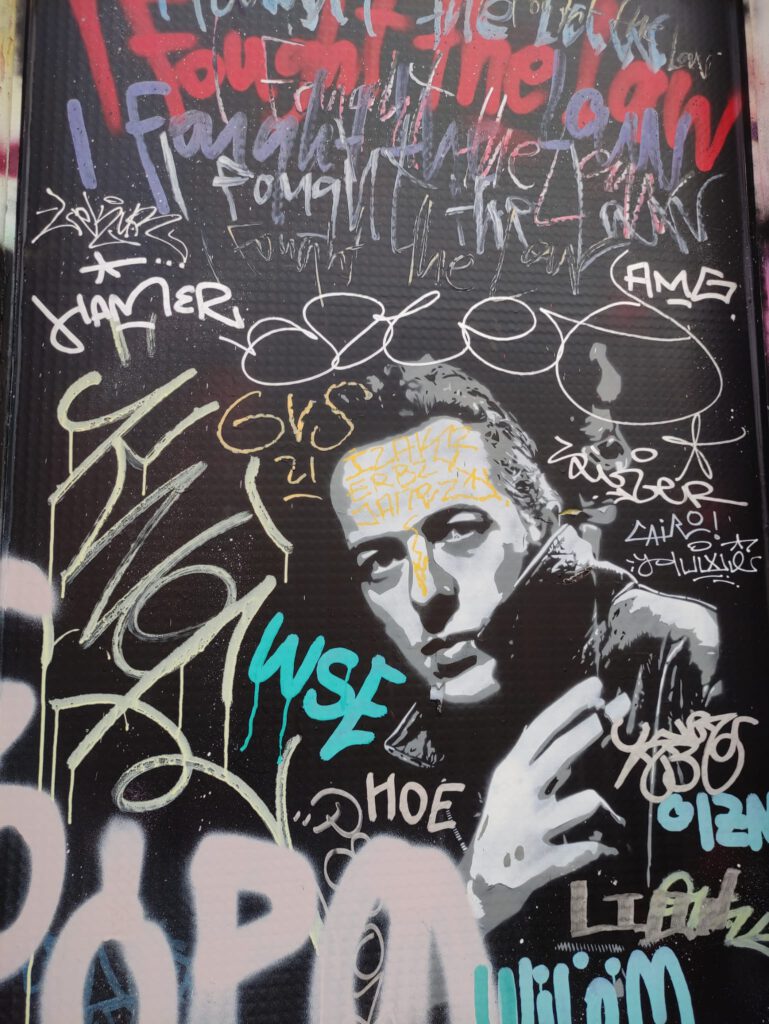Face Graffiti: The Art of Portraits on Urban Surfaces
Face graffiti is a compelling genre of street art that focuses on the depiction of human faces. This style of graffiti highlights the artistic potential of portraiture in public spaces, combining realism with urban expression. In this article, we explore the characteristics, techniques, and impact of face graffiti, shedding light on how artists use this medium to create powerful and evocative images.
What is Face Graffiti?
Face graffiti is a form of street art that centers around the depiction of human faces. Artists use various techniques to create detailed and expressive portraits, ranging from realistic to stylized interpretations. This genre of graffiti transforms ordinary walls into canvases for personal and emotional expression, bringing a unique dimension to urban environments.
Characteristics of Face Graffiti
- Portrait Focus: The central theme of face graffiti is the depiction of human faces. These portraits can vary in style from hyper-realistic to abstract, showcasing the artist’s interpretation and technique.
- Expressive Details: Face graffiti often emphasizes the emotional and expressive qualities of the subject’s face. Artists use detailed features, such as eyes and expressions, to convey mood and character.
- Stylistic Variation: This genre includes a wide range of styles, from photorealistic portrayals to abstract and graphic representations. Artists often experiment with different techniques and aesthetics to create unique and engaging pieces.
- Urban Integration: Face graffiti is often integrated into the urban environment, with portraits appearing on building facades, alleyways, and other public spaces. This integration helps the artwork interact with its surroundings and engage with the community.
Techniques and Methods
1. Stencil Art
Stencil art is a common technique in face graffiti. Artists create detailed stencils of facial features and apply them to surfaces using spray paint. This method allows for precise and repeatable portraits, enhancing the clarity and impact of the image.
2. Freehand Painting
Freehand painting involves creating portraits directly on surfaces without the use of stencils. Artists use spray paint, brushes, and other tools to craft detailed and spontaneous faces, showcasing their individual style and skill.
3. Mixed Media
Some face graffiti artists incorporate mixed media elements, such as stickers, posters, and other materials. These additions can add texture and depth to the portraits, creating more complex and layered artworks.
4. Digital Techniques
With advancements in technology, some artists use digital techniques to enhance their face graffiti. This can include digital projections or augmented reality features that interact with the physical artwork, adding an additional layer of engagement.
Notable Examples and Artists
Several artists have made significant contributions to the genre of face graffiti:
- Banksy: Known for his politically charged and often enigmatic street art, Banksy has created notable works featuring human faces that blend social commentary with striking visuals.
- Shepard Fairey: Famous for his “Obey” campaign, Fairey’s work includes portraits of influential figures and iconic faces, contributing to the popularity and impact of face graffiti.
- J.R.: This artist is renowned for his large-scale photographic portraits that capture the faces and stories of people from diverse communities, often displayed in public spaces.
Impact on Art and Culture
Face graffiti has had a profound impact on both the art world and popular culture:
- Artistic Expression: By focusing on human faces, face graffiti allows artists to explore themes of identity, emotion, and human connection. This form of street art provides a powerful platform for personal and social expression.
- Urban Aesthetics: Face graffiti enhances the visual landscape of urban environments by introducing compelling and evocative portraits. These artworks contribute to the cultural and aesthetic richness of cityscapes.
- Cultural Commentary: Many face graffiti pieces address social and political issues, offering commentary on topics such as inequality, identity, and community. This engagement with current events adds depth and relevance to the artwork.
Challenges and Considerations
- Technical Skill: Creating effective face graffiti requires a high level of technical skill in portraiture and painting techniques. Artists must master these skills to achieve realistic and impactful results.
- Legal Issues: As with other forms of graffiti, face graffiti can face legal challenges related to vandalism and property rights. Artists need to navigate these issues and seek permission when necessary.
- Preservation: Face graffiti, like other street art, can be vulnerable to environmental wear and vandalism. Preservation efforts are important to maintain the artwork’s visual integrity over time.
Conclusion
Face graffiti represents a powerful and expressive genre of street art, characterized by its focus on human portraits and emotional depth. By bringing faces to urban surfaces, artists create compelling and engaging artworks that reflect personal and social themes. As face graffiti continues to evolve, it remains a testament to the creativity and impact of contemporary street art. artists.street art to bring joy and artistic expression to public spaces.enthusiasts.
